There is a quote in Tim O’Brien’s book The Things They Carried I find myself remembering often. He writes:
“The truths are contradictory. It can be argued, for instance, that war is grotesque. But in truth war is also beauty. For all its horror, you can’t help but gape at the awful majesty of combat. You stare out at tracer rounds unwinding through the dark like brilliant red ribbons. You crouch in ambush as a cool, impassive moon rises over the nighttime paddies. You admire the fluid symmetries of troops on the move, the harmonies of sound and shape and proportion, the great sheets of metal-fire streaming down from a gunship, the illumination rounds, the white phosphorus, the purply orange glow of napalm, the rocket’s red glare. It’s not pretty, exactly. It’s astonishing. It fills the eye.”
“In Guns We Trust” by Jean-Francois Bouchard
Published by Magenta Foundation, 2019
review by W. Scott Olsen
This is often a dilemma and a provocation for photographers. How do you take a beautiful picture of a troubling thing? How do you allow empathy for the morally or politically suspect? Photojournalists face these questions every day and have to make reactive decisions on the run. Fine art photographers, however, have the luxury of time and consideration. The result can be provocative, troubling and deep.
In Guns We Trust is an examination of one part of gun culture in the United States. Set at the Big Sandy shooting range outside Wikieup, Arizona, the book looks at the “twice a year, three-day weekend of friends, weapons, targets and gear in Arizona’s high, western desert. With a quarter mile long firing range, populated by hundreds of shooters, The Big Sandy is the largest machine-gun shoot in the United States” (according to the Big Sandy Shoot website).
But the book is not exactly journalism. This book is fine art. The images are posed, well-lighted, well thought out. Many if not most of the images are of targets—old containers and automobiles—that have been the targets of thousands. The containers are blown open by high caliber rounds. The cars are reduced to twisted metal frames and shapes. If you didn’t know what you were looking at you would say they are beautiful.
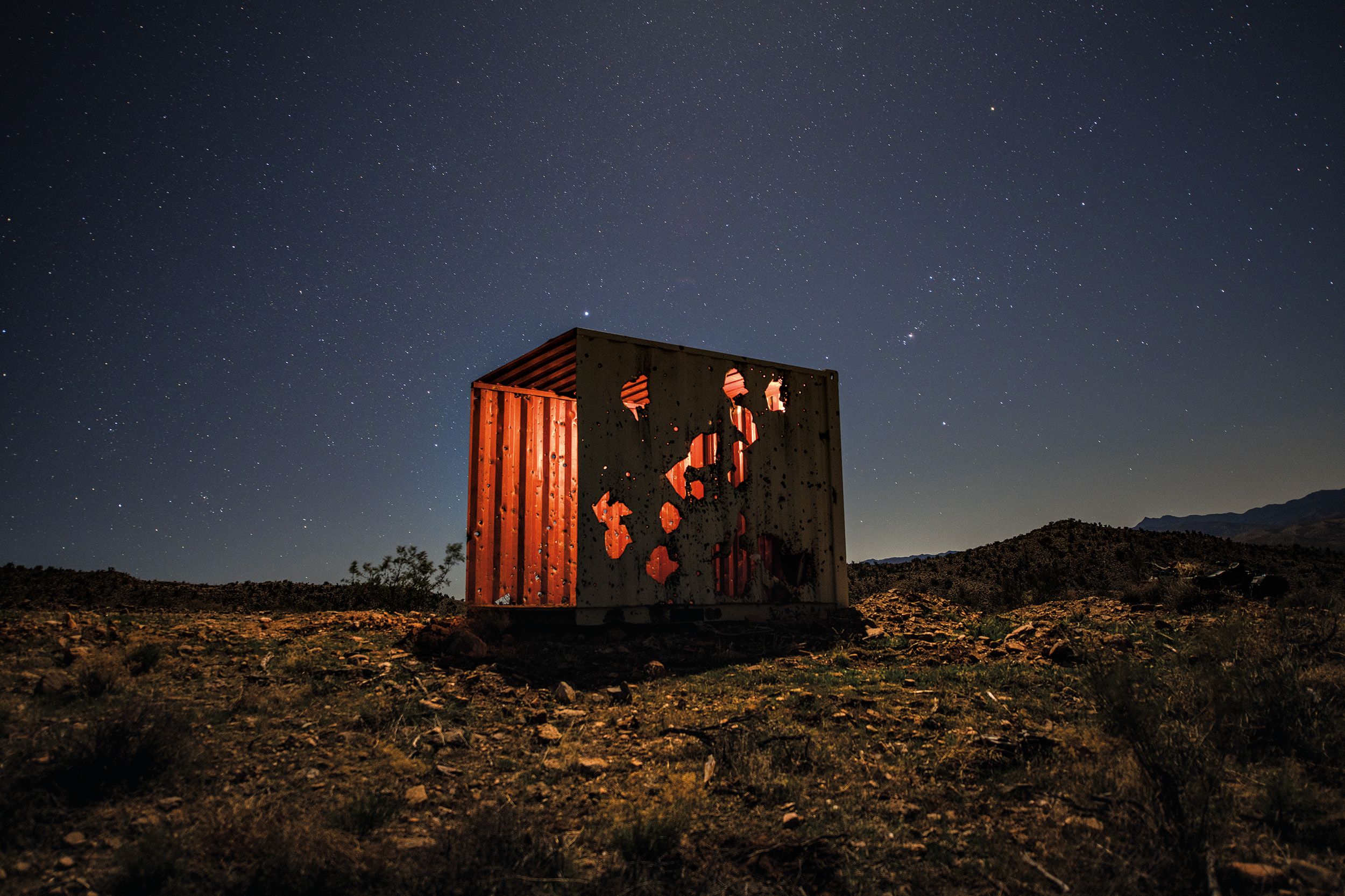
In Guns We Trust is a collection of portraits. Many of them are set at night. The star filled dark sky, the emptiness of the desert, the elegant lighting of the subjects give each image a formal aesthetic. While there are daytime shots, a few drone shots, a few multi-image narratives of explosions, the most compelling work here is the most posed and intentionally made.
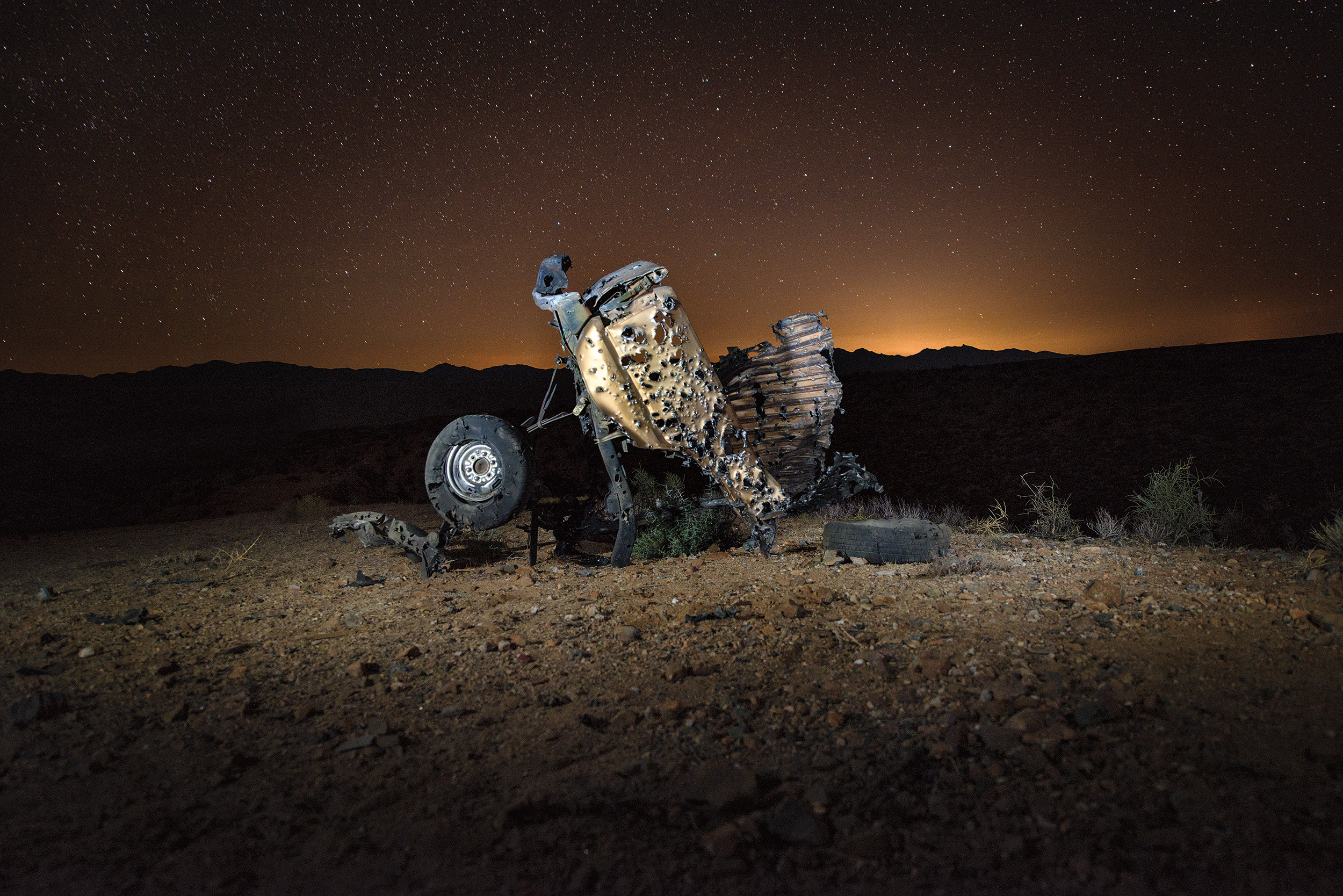
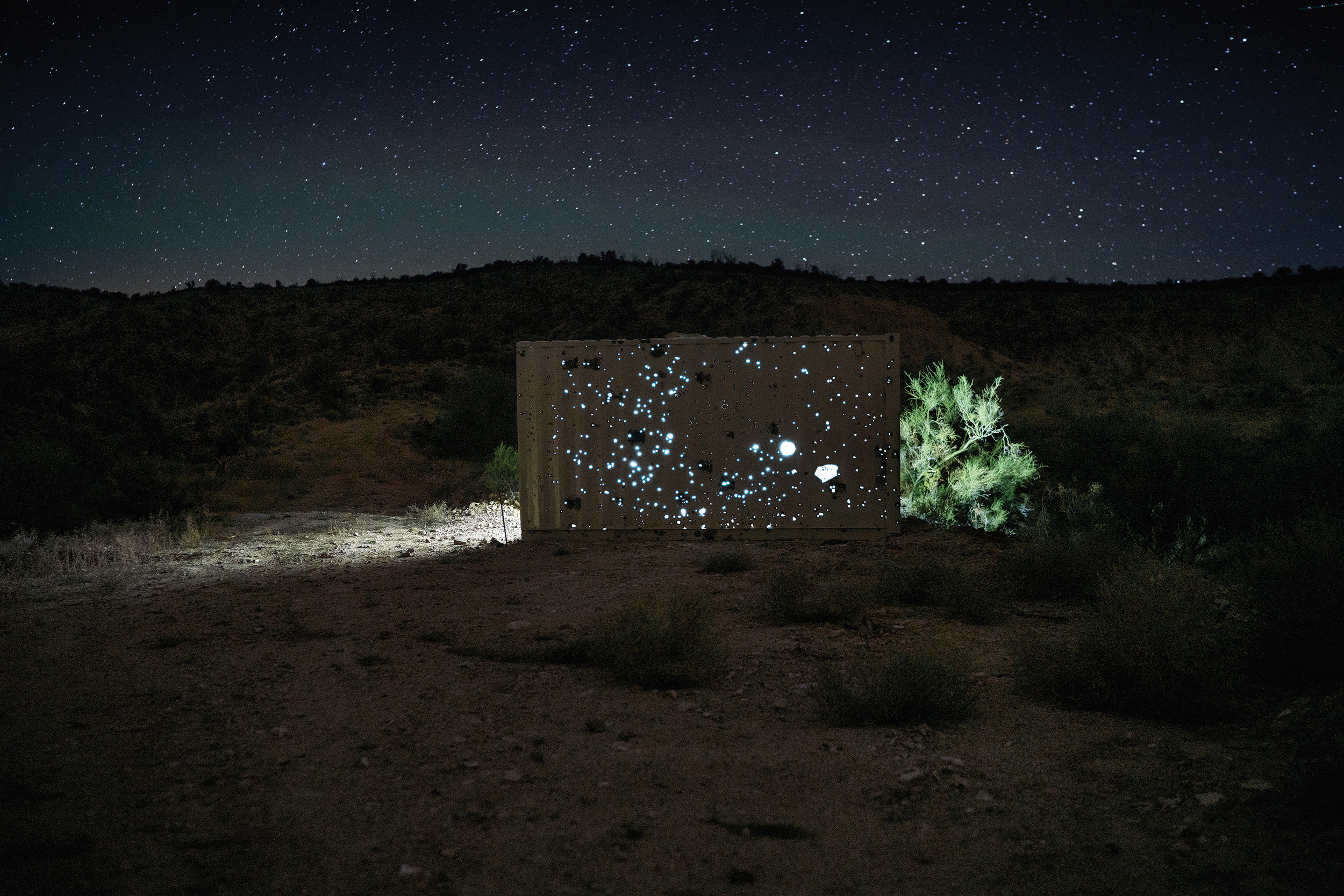
It’s important to note that the subjects of Bouchard’s book are the people who shoot and their targets. The guns themselves, other than those held by their owners, are not really a subject here. There is no celebration of gear. Remember the old line that guns don’t kill people, people do? Well, in this book, people kill cars and containers and naked mannequins of women.
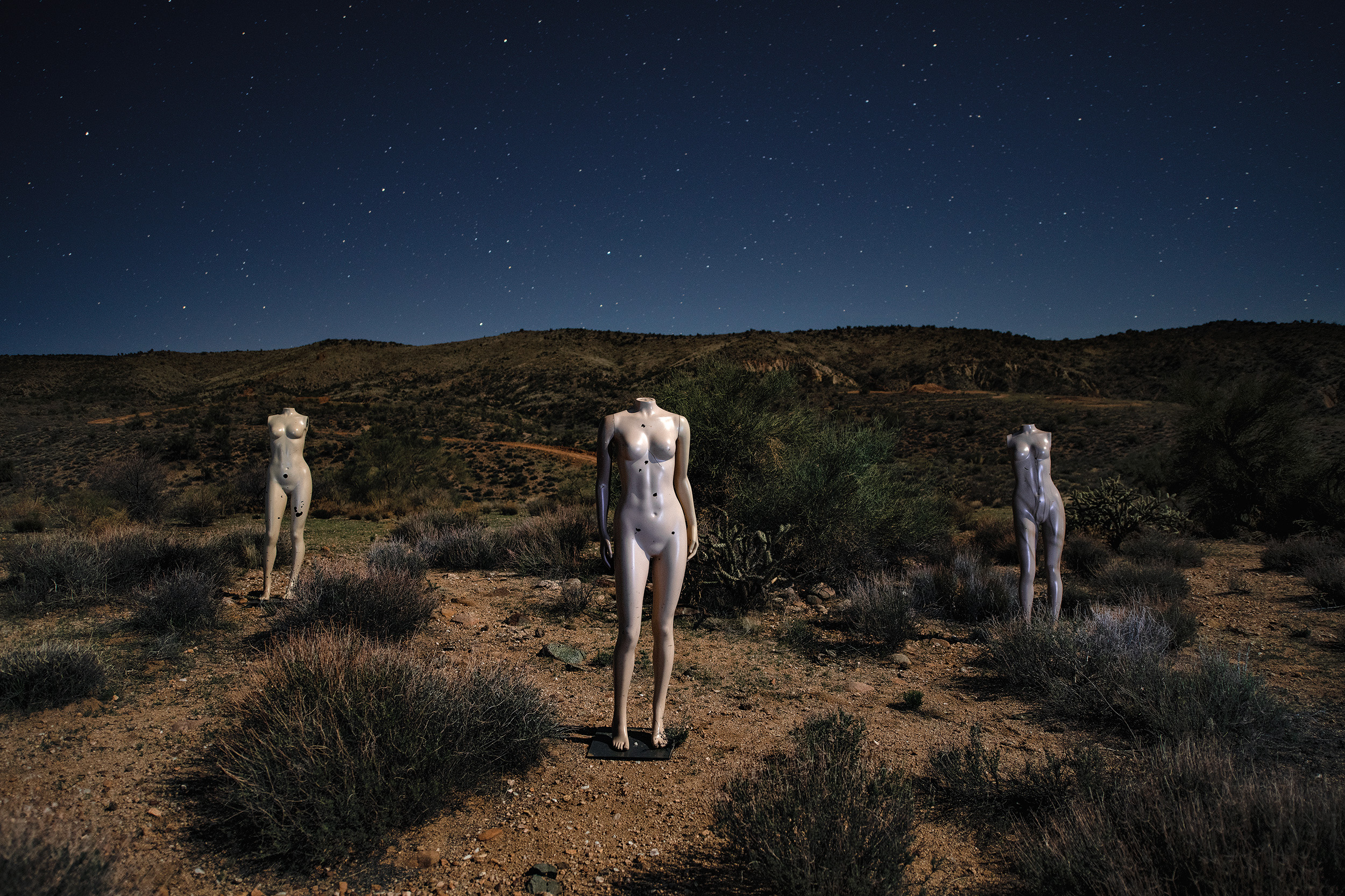
There are two notable bits of text in this book. In the first, a very brief forward by Canadian photographer Edward Burtynsky, he writes: “Fast-forward to 2019, when the citizens of the USA have become one of the most heavily armed countries in the world with the highest mortality rates from peace-time gun violence. Jean-François Bouchard brings forward his debut book and art project to face this perplexing reality head on. Through his surreal series of images and installations, Bouchard parses the extremity of this marginalized gun culture at ground zero, their place of worship.”
Surreal, yes. These images do not construct a political or ethical argument. What they do is allow for a different way of seeing. Less noise. More form.
In a wonderful and detailed and insightful opening essay, Canadian novelist Douglas Coupland writes: “The images themselves are heightened versions of what are already borderline surrealistic situations.”
Coupland goes on to say, “Guns in the U.S. are a massive topic. Bouchard is hyper-aware of this, and in discussions of his work is quick to point out that one could spend a lifetime investigating U.S. gun culture and only scratch the surface. So, with this body of work he narrows the gun discussion to: What brings 200 people together to shoot 50-calibre machineguns? Why might one own a cannon and shoot shells costing hundreds of dollars each? Why might one wear military fatigues and drive thousands of kilometres to camp in a desert? Why are shooters fascinated by the destructive power of their arsenal? Is it merely fun? Is it empowering? Is it freeing? Is it political?”
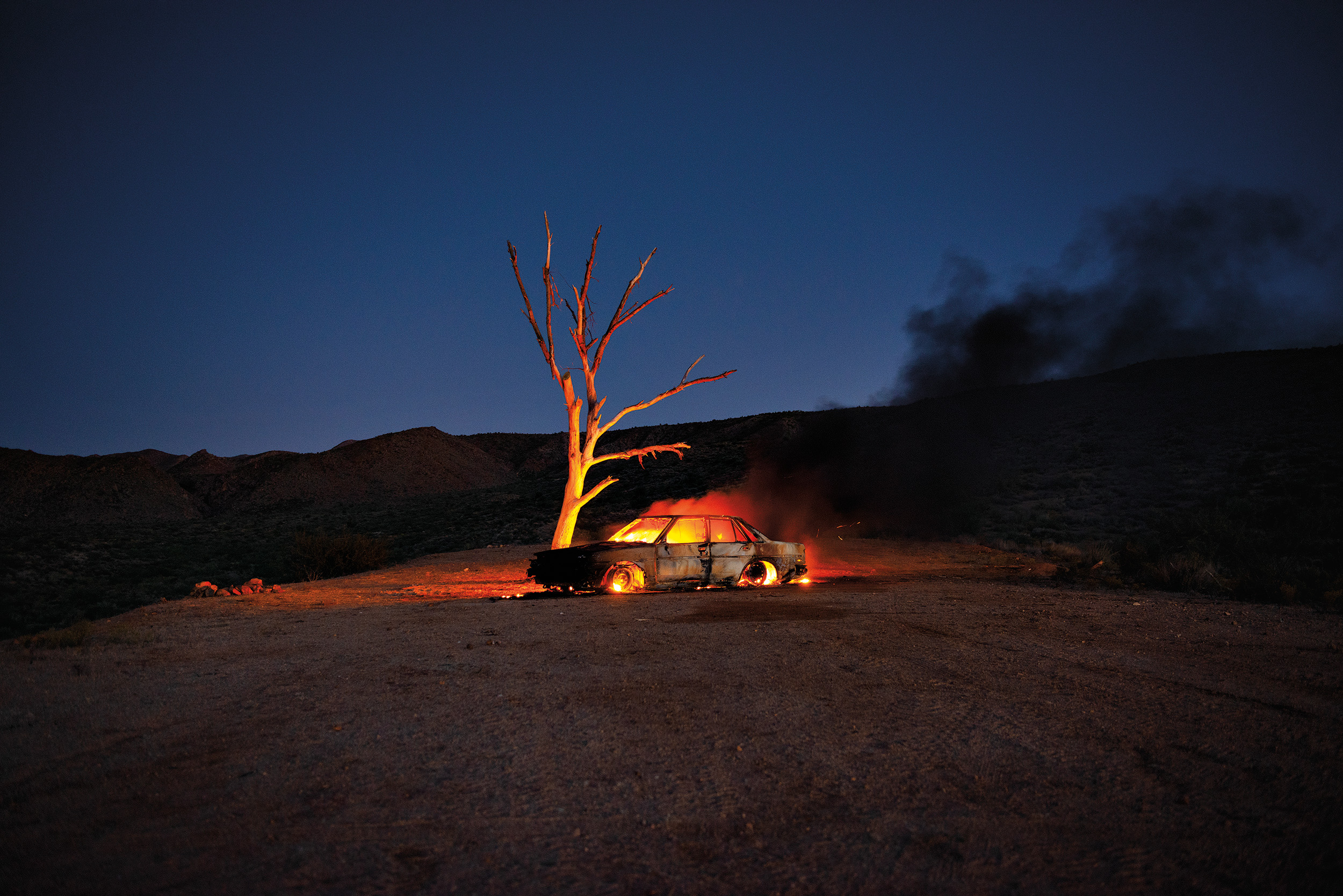

To be honest, the book does not answer Coupland’s questions. There are no reasons here. There are no interviews with the shooters. Any psychology, sociology, or politics in this book would be projections from the reader. Then again, ethnography? Yes. There is both despair and defiance in a community that takes “A well-regulated Militia, being necessary to the security of a free State, the right of the people to keep and bear Arms, shall not be infringed” as raison d’etre.
It would be easy to image the people at Big Sandy are either patriots or lunatics. In Guns We Trust won’t sway your opinion either way. What the book will do, however, is allow the viewer to see that world in a way I would imagine is new and perhaps foreign, even to the men and women and children who attend. That’s what art is supposed to do.
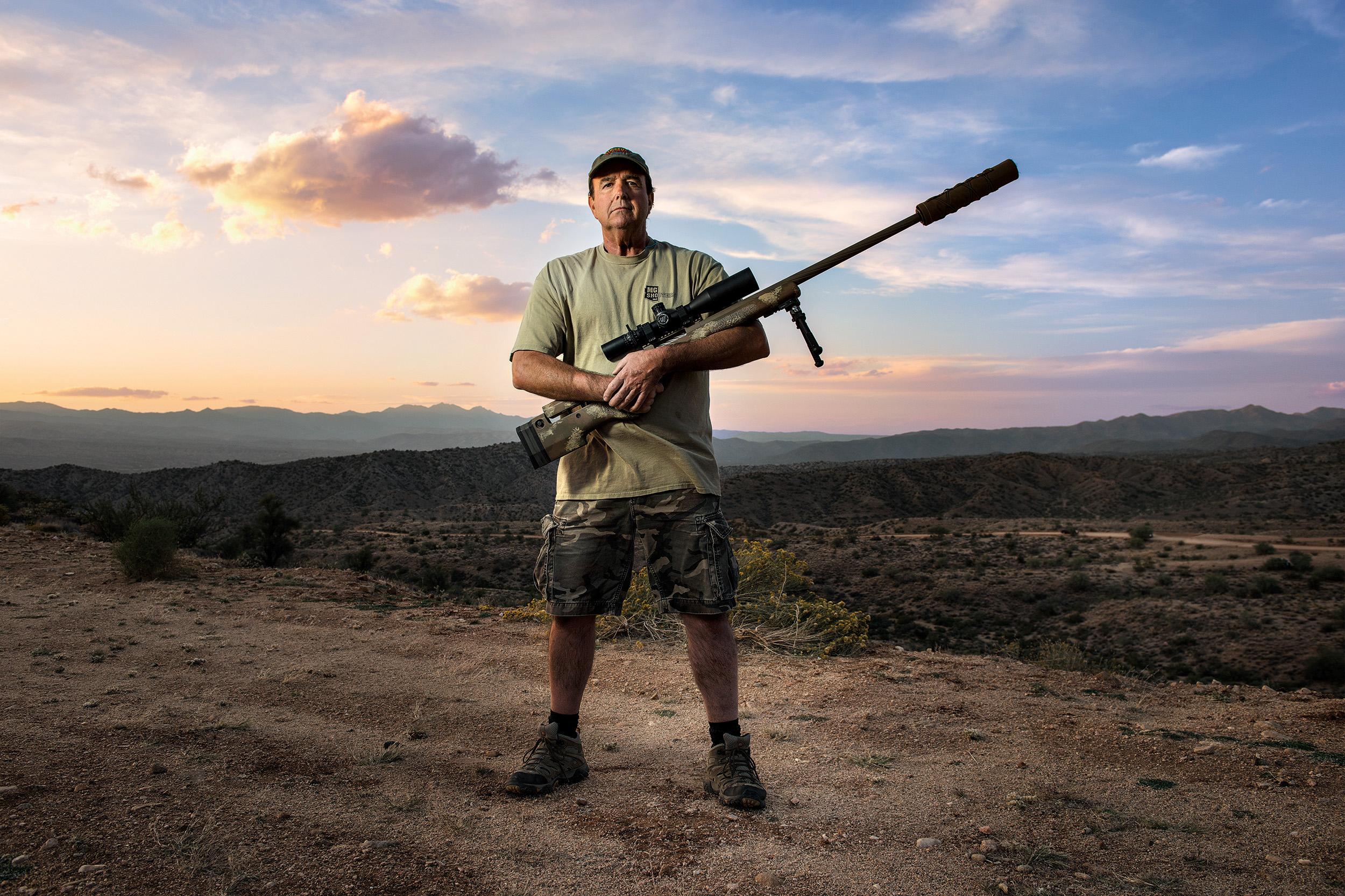
Tim O’Brien got it right. It’s astonishing. It fills the eye.
A note from FRAMES: if you have a forthcoming or recently published book of photography, please let us know.




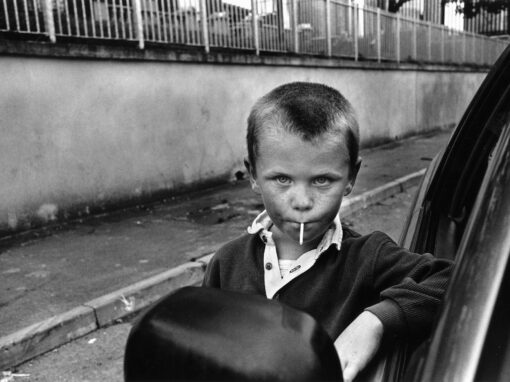
Mirko
February 23, 2021 at 19:40
Great series! Thank you for sharing. I like the last picture most. Good job!
Giulio D'Ercole
February 24, 2021 at 10:19
Thanks for sharing, it is a thought-provoking book indeed. The responsibilities of a photojournalist and of an artist. First of all to shed light and raise awareness. Then? The epitome of this question, unanswered by many, is the famous Pulitzer winning Kevin Carter’s photo of the dying child (who didn’t die) with the waiting vulture in the background. You shoot, then what? It would be unjust to load photographers’ shoulders with the responsibility to save the world. Carter’s shoulders did not succeed to bear the weight of it. Today, though, another question arises: in a world that produces billions of photos every day, are photos alone enough to shed enough light to sparkle awareness…. as well lit as they can be?
Paul Bracey
February 24, 2021 at 23:35
While waiting for some work on my car to be completed, a conversation with an interesting young man had ensued. Five years ago, he was practically broke, selling bait and fishing gear. Then he started selling guns and ammo. His small gunshop is in a very rural part of the state. Now he spends most of his time driving all over the country trying to find ammo and can’t get enough to keep it in stock, selling out faster than he can buy it. He told me he sold 9000 guns last year. Astounding. In the middle of nowhere! Most people don’t realize there are more gun shops and gun clubs in the United States than there are McDonald’s. Does Bouchard’s photo essay, ‘In Guns We Trust’ leave you wondering, “WHY?” Roxanne Dunbar-Ortiz’s ‘Loaded’ would be a good companion read, in fact, a recommended read for anyone who is intrigued by this country’s relationship with weapons.